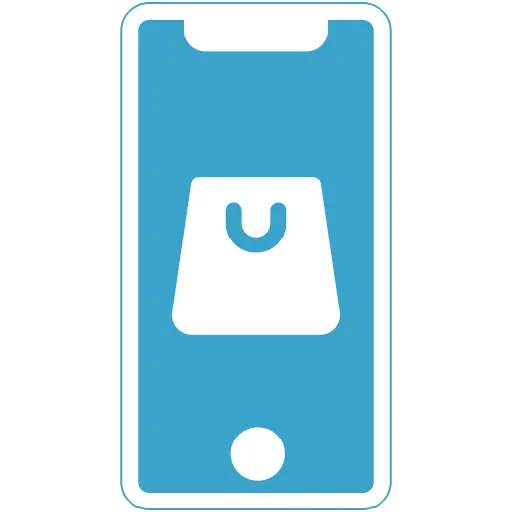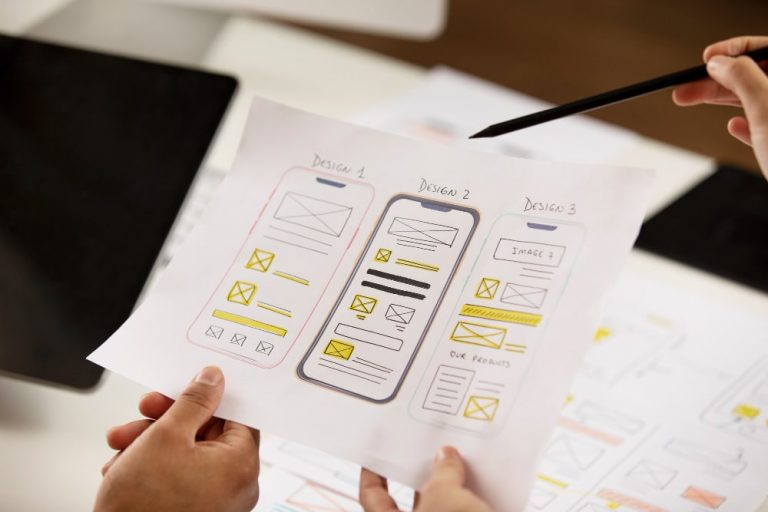User-centered design transcends mere methodology; it’s a philosophy that invites users to become co-creators in the design journey. As Charles Eames, the eminent American designer and architect, aptly remarked, ‘The role of the designer is that of a good, thoughtful host anticipating the needs of his guests.’ Similarly, in the realm of User-Centered Design (UCD), the deeper our understanding of user preferences and desires, the more effectively we can cultivate a loyal user base, elevating an app from mere captivation to lasting engagement.
In today’s world of smartphones and tablets, everything is possible at your fingertips, so UCD within mobile applications has become a determining factor of success. UCD is a kind of approach at every stage in the process of designing that helps to follow the requirements of users. The purpose behind UCD is to develop a highly functional, well-productive, and approachable system, product, or service for users.
Why is user-centered design important in mobile app development?

User-centered design always plays a major role in mobile app development, as it always prioritizes users in the design and development process. To create an effective and unique app, understanding the user’s interests, preferences and expectations is very necessary for the developers. This realization ends with the rise of User Experience (UX).
The user-centric approach always helps to develop a product that favors the target audience. The thorough involvement of users in the design process on a feedback basis makes developers address the issues early to optimize the features that are preferable to users. More than saving time, these avoid extensive redesigning and help the apps to remain distinctive in this digital era.
what is the user-centered design process in mobile app development like?
In mobile app development, the User-Centered Design (UCD) process is a methodical technique that centers on comprehending, conceiving, creating, and honing the app according to end users’ wants and preferences. This is an example of a standard UCD procedure designed for creating mobile apps:
Research and Understanding
User Research: To fully comprehend the target audience’s habits, preferences, and pain points, do in-depth research. Analytics, interviews, and surveys could be used in this.
Market Research: Analyze the competition and identify market trends to ascertain what works well and what can be improved upon.

Define User Personas and Use Cases
Create thorough user personas that accurately reflect the various user types and their traits, objectives, and pain areas based on the study.
Define use cases to comprehend the usual user interactions with the app and the goals they hope to accomplish.
Ideation and Conceptualization
Arrange brainstorming meetings with teams from different departments to produce original ideas and concepts that complement user requirements and organizational objectives.
To conceptualize and refine the suggested concepts, make wireframes and prototypes to make sure they are workable and user-friendly.
Usability Testing
To get input on the design, flow, and usability of the app, do usability testing sessions where representative users engage with the wireframes or prototypes.
Design and Development
Refine the application’s design by adding visual components, branding, and the user interface (UI) design in response to comments and insights gathered from usability testing.
Continuous Testing and Iteration
At every step of development, test often to find defects, usability problems, or any changes from the original design and user requirements.
Make the required changes to the app iteration based on the testing findings to make sure it satisfies the intended standards and user expectations.

Post-launch Evaluation and Feedback
To pinpoint areas in need of enhancement and upcoming upgrades, keep an eye on the app’s functionality, collect user input, analyze statistics, and evaluate reviews.
To improve the app and make plans for future editions, keep interacting with users, asking their thoughts, and incorporating their comments.
The iterative UCD approach seeks to continuously improve by obtaining input and implementing changes in response to evolving user requirements and technology breakthroughs. It’s essential for developing mobile applications that offer a remarkable user experience and genuinely connect with people.
What are the benefits of user-centered design (UCD)?
Because of the special features and usage patterns associated with mobile devices, user-centered design, or UCD, is especially important when developing mobile applications. The following are the particular advantages of UCD for creating mobile apps:

1. Enhanced User Engagement and Satisfaction
UCD guarantees that mobile apps are created with the requirements and preferences of users in mind, making for a fun and fulfilling user experience. Consequently, this promotes enhanced user contentment, culminating in amplified app utilization and retention.
2. Intuitive Navigation and Usability
UCD-designed mobile apps are simple to use and intuitive, fitting in with typical mobile usage patterns. Users must be able to rapidly grasp how to interact with the app to maintain their interest and encourage them to return.
3. Reduced Learning Curve
Because of UCD’s easy design, users require less time to become proficient with the software. In mobile applications, where users frequently demand to do tasks quickly and effectively, this simplicity is especially crucial.
4. Optimized Performance and Speed
One of the most important components of UCD is knowing what consumers expect from apps in terms of responsiveness and speed. The app’s performance is matched to these expectations by UCD, which guarantees a smooth and speedy app experience for consumers and reduces annoyance and app abandonment.
5. Better Conversion Rates
With a thorough understanding of the user, an app may be tuned to lead users to particular activities or conversions. To improve conversion rates, UCD assists in identifying these crucial moments and customizing the user journey.
6. Accommodating Various Screen Sizes
Mobile device screen sizes and resolutions differ. UCD makes sure that the application’s layout and user experience are ideal across all screen sizes, from tablets to smartphones, by making sure the design is responsive and adaptable.
7. User Retention and Loyalty
UCD contributes to the retention of a devoted user base by continuously integrating user feedback and adapting the app to user demands. Customers are more devoted to the app when they feel that their opinions are valued and taken into consideration.
8. Competitive Advantage
An app built with UCD principles stands out in a crowded market by providing an enhanced user experience. The success and marketability of an app can be greatly impacted by this competitive advantage.
Conclusion
The three main advantages of UCD in mobile app development are better usability, navigation, and user pleasure. The procedure guarantees consistency across many mobile devices, enhances speed and efficiency, and dramatically lowers the learning curve. Additionally, UCD’s adaptable design supports a wide range of screen sizes and promotes cross-platform performance. This user-focused strategy gives an app developer a competitive edge in a congested app market by improving conversion rates and increasing customer loyalty and retention. Adopting User-Centered Design is crucial as the mobile environment develops since it guarantees that applications are not just useful tools but also essential companions for consumers in the digital era.


 Schedule An Appointment
Schedule An Appointment